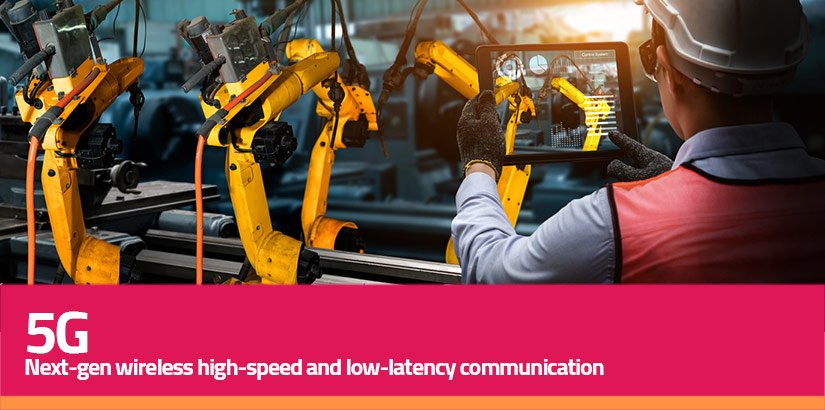Overview
In the realm of telecommunications, 5G stands as the fifth-generation technology standard for cellular networks. It commenced global deployment by cellular device companies in 2019, poised to supersede the existing 4G technology that serves as the backbone for connectivity in most contemporary mobile phones. The 3rd Generation Partnership Project (3GPP), an industry consortium responsible for setting standards in the field, plays a pivotal role in defining and shaping 5G. According to their specifications, “5G” encompasses any system utilizing 5G New Radio (5G NR) software, a definition that gained widespread adoption in late 2018. This transformative technology promises to revolutionize mobile communications and bring forth a new era of connectivity, offering faster speeds, lower latency, and greater capacity for an array of applications and services.
Key Benefits
- Higher spectral efficiency
- Great transmission speed
- Highly Reliable
- More Security
- Wide Bandwidth
- Less power consumption
5G
5G, the fifth and latest iteration of broadband cellular technology, represents a significant leap forward from its predecessor, 4G. Built on the foundation of Orthogonal Frequency, this advanced network can be deployed across various radio spectrum bands, including low band for wide coverage and in-building penetration, mid band for a balance of coverage and capacity, and high band (mmWave) for targeted high-capacity applications. It also leverages unlicensed bands for increased flexibility. 5G boasts a unified and more capable air interface, designed to accommodate next-generation user experiences, support new deployment models, and enable innovative services. Its extended capacity accommodates a wide range of frequencies, including those vacated by previous wireless networks, with standards dividing them into FR1 and FR2, encompassing extremely high/mmWave frequencies.

Cloud-Native
Cloud native architecture is both programmable and scalable. It supports scale and performance demands emerging from IoT and 5G.
Network Slicing
The 5G also allows to implement virtual networks (network slicing), create subnets, in order to provide connectivity more adjusted to specific needs.
URLLC
5G NR reduces air interface latency and enhances acknowledgment methods, while also enabling ultra-reliable transmissions surpassing LTE’s reliability standards.
Future-Proof
5G NR addresses the issue of legacy devices struggling with new, incompatible digital traffic, allowing them to ignore certain space-time grid segments.

